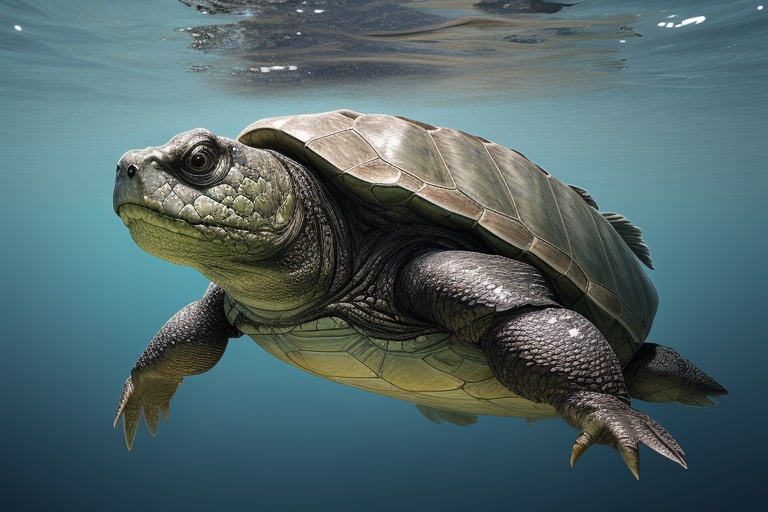Introduction
The alligator snapping turtle (Macrochelys temminckii) is one of the largest freshwater turtle species in North America and a remarkable creature. However, due to habitat destruction, overharvesting, and pollution, their populations have been declining. In this article, we will explore effective conservation strategies to protect these ancient and unique turtles.
Understanding the Alligator Snapping Turtle

Before delving into conservation, let’s get to know this incredible species a bit better.
The Alligator Snapping Turtle:
- Is known for its enormous size, with some individuals weighing over 200 pounds.
- Has a distinctive appearance, with a rough shell and a massive head featuring a powerful beak.
- Has a life span that can exceed 100 years, making them one of the longest-lived turtle species.
- Is a skilled predator, known for its ingenious method of luring prey using its worm-like tongue.
- Is found primarily in the southeastern United States, inhabiting rivers, swamps, and bayous.
Challenges in Alligator Snapping Turtle Conservation
To effectively conserve alligator snapping turtles, it’s vital to understand the challenges they face.
Habitat Loss and Fragmentation
The expansion of urban areas and agriculture has led to the degradation and fragmentation of their habitats. This isolation can restrict their movement, breeding, and access to food sources.
Overharvesting
Alligator snapping turtles have been historically overharvested for their meat and the pet trade. Even today, poaching remains a significant threat to their survival.
Pollution
Pollution, including water contamination from agricultural runoff and industrial chemicals, poses a severe risk to these turtles. It can lead to health issues, impaired reproduction, and habitat degradation.
Climate Change
Climate change affects their nesting sites and can impact the sex ratio of hatchlings, as temperature plays a crucial role in determining the gender of the offspring.
Conservation Strategies for Alligator Snapping Turtles
To conserve these remarkable creatures, we need a multifaceted approach. Here are some expert strategies:
1. Habitat Restoration
Reconnecting Fragmented Habitats
- Create wildlife corridors or greenways to connect isolated populations.
- Restore riparian zones to improve water quality and provide suitable nesting sites.
2. Legal Protections
Restrictions on Harvesting
- Enforce strict regulations on the collection and sale of alligator snapping turtles.
- Implement seasonal hunting bans to protect nesting and juvenile turtles.
3. Monitoring and Research
Population Surveys
- Conduct regular population surveys using modern technology such as drones and underwater cameras.
- Collaborate with researchers to gather data on their behavior and habitat preferences.
4. Education and Awareness
Community Engagement
- Educate local communities about the importance of alligator snapping turtles in the ecosystem.
- Organize workshops, seminars, and school programs to raise awareness.
5. Captive Breeding and Release
Headstarting Programs
- Establish headstarting programs to rear young turtles in captivity and release them into the wild when they have a better chance of survival.
- Collaborate with zoos and aquariums to support these programs.
6. Mitigating Climate Change Effects
Climate-Resilient Nesting Sites
- Identify and protect nesting sites that are less vulnerable to climate change impacts.
- Monitor temperature-dependent sex determination and consider hatchery intervention in extreme cases.
7. Pollution Control
Water Quality Improvement
- Advocate for stricter regulations on water pollution.
- Promote responsible land use practices and the reduction of harmful agricultural runoff.
8. International Cooperation
CITES Protection
- Encourage international cooperation under the Convention on International Trade in Endangered Species (CITES) to control the cross-border trade of alligator snapping turtles.
Conclusion
Conserving alligator snapping turtles is a complex and challenging endeavor, but it’s vital to ensure the survival of this remarkable species. By addressing habitat loss, overharvesting, pollution, and climate change, and by engaging local communities, researchers, and governments, we can help protect these ancient creatures for generations to come. Your support and involvement in these conservation efforts can make a significant difference. Together, we can ensure the alligator snapping turtle continues to thrive in the wild.